
From fresh produce to grab-and-go meals, plastic clamshell packaging has become a staple in the food industry. It offers product visibility, protects freshness, and makes for an easy consumer experience.
But for food manufacturers, working with plastic clamshells comes with its own set of operational challenges, especially when production needs to be fast, precise, and compliant with strict food safety regulations.
Many food packaging lines struggle with slow throughput, inconsistent portion sizes, labeling errors, and increased labor demands. These inefficiencies reduce profitability and increase the risk of food waste and contamination—two things no food manufacturer can afford.
The good news? With the right combination of automated packaging equipment, you can transform your clamshell line into a high-performing, food-safe operation. Let’s break down the four essential pieces of equipment that keep clamshell packaging lines efficient, accurate, and compliant.
Filling Equipment: Ensuring Portion Accuracy and Reducing Waste
One of the most common issues in food packaging is inconsistent portioning. Whether you're packaging berries, deli items, or baked goods, delivering a consistent fill builds consumer trust and ensures you’re not giving away product or failing to meet weight requirements.
Filling equipment provides precise, repeatable portioning, reducing the risk of overfilling (which leads to profit loss) or underfilling (which can result in non-compliance or customer dissatisfaction).
Automated fillers remove the guesswork, helping manufacturers stay within target weights, cut down on waste, and speed up production.
There are different types of fillers for different product types:
- Solid fillers work well for dry goods like nuts or granola.
- Piston fillers are better suited for thicker, semi-liquid foods like prepared pasta or dips.
- Gravity or overflow fillers are ideal for more fluid items like dressings or sauces.
By selecting the right filler for your product texture and clamshell package size, you create a more efficient and accurate process from the very start of the line.
Denesters: Automating the Clamshell Packaging Separation Process
Before a single product is filled or labeled, the plastic clamshell packaging itself needs to be separated, oriented, and placed on the line. In many food operations, this step is still done manually, leading to slower production and increased risk of contamination from human contact.

Denesters solve this problem by automatically dispensing each individual clamshell package onto the conveyor. This reduces labor needs, keeps hands off food-contact surfaces, and ensures that each container is perfectly aligned for filling, sealing, and labeling.
Denesters can also help you:
- Maintain a steady flow of containers, preventing gaps in production.
- Minimize human error, reducing the risk of misfeeds or container jams.
- Support compliance with food safety standards, such as those enforced by the FDA and USDA.
Labeling Equipment: Enhancing Branding and Compliance
A label isn’t just for show—it’s a critical piece of information. It tells consumers what’s inside, displays nutritional facts, and ensures regulatory compliance. Misapplied, illegible, or missing labels can lead to lost sales, fines, or even product recalls.
Automated labeling equipment eliminates these risks by applying labels quickly, consistently, and accurately. Whether you're labeling the top of plastic clamshell packaging for fresh strawberries or applying a front-and-back label to a deli meal, these systems can handle a variety of formats with precision.
Why it matters:
- Labels must meet FDA and USDA labeling regulations, especially when displaying nutrition facts, allergens, or expiration dates.
- Retailers often have strict requirements for barcode placement and label design.
- Consumers expect clean, professional labels that reflect quality and transparency.
With Pack Leader USA’s flexible labeling systems, you can adapt to a wide variety of product types, packaging styles, and production demands without sacrificing speed or accuracy. These systems are designed to give you the versatility and control needed in a fast-paced environment. Here’s how:
Handle Complex Labeling With Ease
Whether you're labeling clamshell packaging for fresh produce, deli items, or prepared meals, our labelers can handle multiple labeling configurations with ease.
Want to apply a front label for branding and a back label for nutrition facts? No problem, try the PL-622 or the PRO-625.
Need a wrap around label for tamper evidence? Choose from one of our 6 wrap around labelers.
The systems are built to handle complex label placements in one pass, saving time and reducing the need for manual repositioning or secondary labeling stations.
Fast Changeovers for Any Container Size
Product variety is a reality in today’s food manufacturing environment. From seasonal produce packs to multi-SKU deli trays, your packaging line needs to pivot quickly.
Our labelers are built for rapid changeovers, allowing you to switch between container sizes or label formats with minimal downtime.
With intuitive controls and adjustable guides, your team can reconfigure the line without needing technical support, helping you stay agile and keep up with demand.
Conveyor Systems: Keeping Your Food Packaging Line Moving
Without a reliable conveyor system, even the best fillers and labelers won’t reach their full potential. For plastic clamshell packaging, conveyors ensure a smooth, sanitary flow of containers from one station to the next, helping to maintain line speed and prevent backups.

They also play a vital role in preserving product integrity by minimizing unnecessary movement or contact that can cause damage to delicate items like produce or baked goods. With the right conveyor system in place, your equipment can operate at peak efficiency, keeping your production line running continuously and predictably.
Plus, modern conveyor systems are highly customizable, meaning they can be designed to fit into tight spaces, accommodate elevation changes, and even support automated quality checks or accumulation zones as needed.
Food-grade conveyor systems are designed to:
- Resist contamination with easy-to-clean, non-porous surfaces.
- Maintain precise container spacing, ensuring accurate label and product placement.
- Accommodate a variety of container shapes and weights without tipping or jamming.
Customizing your conveyor layout also allows you to:
- Maximize floor space and work within your existing facility footprint.
- Build in buffer zones or accumulation areas to prevent slowdowns at key stages.
- Prepare your line for future equipment upgrades or product changes.
When all equipment—from denesters to labelers—is connected with a reliable conveyor system, your clamshell packaging process becomes seamless, efficient, and scalable.
Build a Better Clamshell Packaging Line With the Right Equipment
Plastic clamshell packaging is a smart choice for food manufacturers, but only if your equipment can keep up with demand, maintain safety, and deliver consistency at every step.
By investing in the right combination of automated equipment, you can:
- Improve portion accuracy and reduce food waste with filling systems.
- Eliminate contamination risks and save labor with denesters.
- Ensure compliance and boost shelf appeal with labelers.
- Keep your line moving smoothly and safely with food-grade conveyors.
Together, these systems form the foundation of an efficient, semi-integrated clamshell packaging line, giving you the flexibility to grow, adapt, and thrive.
Want to see how these solutions could work for your operation?
Download “The Food Manufacturer’s Guide to Food & Beverage Labeling Equipment” to take the first step toward a smarter, safer food packaging process.
.webp?width=200&height=114&name=2x-Packleader-logo-large%20(1).webp)

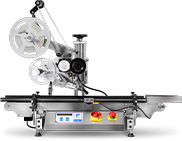
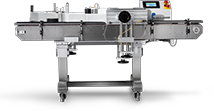
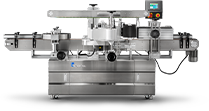
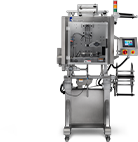
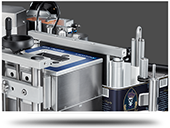
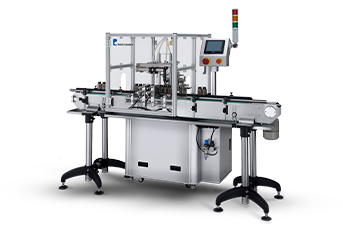
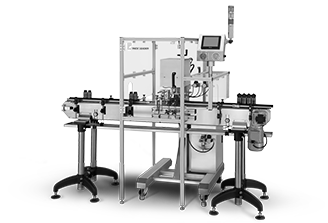
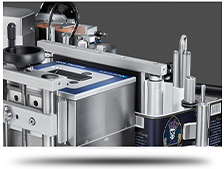






.webp?width=360&name=2x-color-logo%20(1).webp)